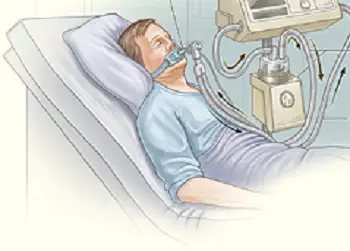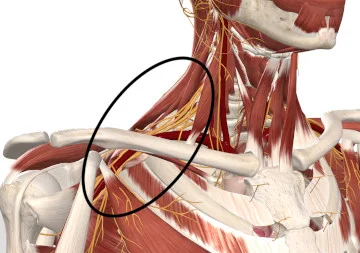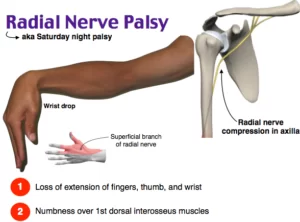Coma
What is a Coma?
Some patients following moderate to severe traumatic brain injury will present with profound and prolonged consciousness impairment. A coma is a profound or deep state of unconsciousness. The affected individual is alive but is not able to react or respond to life around him/her. Coma may occur as an expected progression or complication of an underlying illness, or as a result of an event such as head trauma.
A persistent vegetative state, which sometimes follows a coma, refers to a condition in which individuals have lost cognitive neurological function and awareness of the environment but retain noncognitive function and a perserved sleep-wake cycle.
It is sometimes described as when a person is technically alive, but his/her brain is dead.
However, that description is not completely accurate. In persistent vegetative state the individual loses the higher cerebral powers of the brain, but the functions of the brainstem, such as respiration (breathing) and circulation, remain relatively intact.
Spontaneous movements may occur and the eyes may open in response to external stimuli, but the patient does not speak or obey commands.
Patients in a vegetative state may appear somewhat normal.
They may occasionally grimace, cry, or laugh.
Definition
Unconsciousness is an abnormal state in which a person is not alert and not fully responsive to his/her surroundings.
Levels of unconsciousness range from drowsiness to collapse and may range in severity from fainting to coma.
Unlike when a person is asleep, someone who is unconscious cannot cough, clear his/her throat, or turn his/her head if in distress.
When unconscious, a person is in danger of choking, making it very important to keep the airway clear while awaiting medical care.
Coma ( or unconsciousness ) is a state in which a patient is totally unaware of both self and external surroundings, and unable to respond meaningfully to external stimuli.
Coma results from gross impairment of both cerebral hemispheres, and/or the ascending reticular activating system.
Causes of Coma
- Focal brain dysfunction
- brain tumour
- vascular events (CVA)
- demyelination
- infection, such as cerebral abscess
- focal head injury
- Diffuse brain dysfunction
- infection, such as meningitis or encephalitis
- Epilepsy
- hypoxia and hypercarbia
- drugs, poisoning, and overdoses ( including alcohol)
- metabolic/endocrine causes, such as diabetic coma, hepatic or renal failure, hypothyroidism, severe electrolyte disturbances
- hypotension, or hypertensive crisis
- diffuse head injury
- subarachnoid haemorrhage
- hypothermia, hyperthermia
Symptoms
The signs and symptoms of a coma commonly include:
- Closed eyes
- Depressed brainstem reflexes, such as pupils not responding to light
- No responses of limbs, except for reflex movements
- No response to painful stimuli, except for reflex movements
- Irregular breathing
- pupils not responding to light
Diagnosis
If available, the history from relatives or ambulance staff will often give all the necessary clues needed to make a provisional diagnosis of the cause of unconsciousness.
However, if they are a pyrexial, depressed epileptic diabetic who has been unwell recently and then fallen down stairs.
Making a diagnosis is important because it will direct appropriate therapy.
However, it does not reduce the need for generic supportive care, such as that offered on intensive care.
Sometimes, the diagnosis allows the withdrawal of care, if the cause of coma is untreatable and the brain damage irreversible.
Evaluation
The comatose patient should be physically examined for any helpful signs, such as lumps on the head and non blanching rashes.
The system which will be examined most intently ( and often provides the least information) is the nervous system.
There are certain parts of the central nervous system that are easy to examine, including the eyes and reflexes, but other information is provided by the posture, muscle tone, and respiratory pattern.
The eyes do give useful information – pupil size and equality, and direction of gaze.
A truly comatose patient is deeply unconscious, with no response to pain.
However, it is often found that patients are not completely unconscious, and so can be categorized onto a point on a “coma scale”.
Here is an example of a simple 5-point scale:
- 1 = fully awake
- 2 = conscious but drowsy
- 3 = unconscious but responsive to pain with purposeful movement e.g. flexion/withdrawal
- 4 = unconscious but responding to pain by extension
- 5 = unconscious and unresponsive to pain
This scale gives a simple measure of the degree of unconsciousness, but disregards other information that may be available.
The most commonly used complex scale, using three groups of observations, is the Glasgow Coma Score, which was originally suggested for the assessment of head injury patients.
This looks at eye activity, verbal and motor responses, and assigns points for each to give a composite score, 3 being deeply unconscious and 15 being fully conscious:
GCS SCALE POINTS
Best motor response
- Movement in response to command = 6
- Localizes pain = 5
- Withdraws from pain = 4
- Flexes in response to pain = 3
- Extends in response to pain = 2
- No response = 1
Best verbal response
- Fully orientated = 5
- Confused = 4
- Inappropriate words = 3
- Incomprehensible sounds = 2
- No response = 1
Best eye response
- Eyes open spontaneously = 4
- Eyes open to command = 3
- Eyes open in response to pain = 2
- Eyes remain closed = 1
These scales and scores are most useful in allowing the assessment of changing levels of consciousness, either improvement or deterioration. A worsening of the GCS in a head-injured patient indicates the need for urgent neurosurgical intervention.
There are other coma scales, which apply to specific types of coma, such as that found in hepatic failure:
- Stage 1: impaired personality or thinking. EEG usually normal
- Stage 2: confusion, abnormal sleep, and drowsiness. Asterixis and increased reflexes, with plantar responses up or down. EEG abnormal.
- Stage 3: marked confusion, with an inability to perform the fine movement. Responds to painful stimuli
- Stage 4: comatose with depressed reflexes
These problems in hepatic failure are caused by cerebral oedema, due to problems such as hypoglycaemia, hyponatraemia, hypokalaemia, hypothermia, respiratory and renal failure.
The Rancho Los Amigos Scale: It is most useful during the first weeks or months after the injury. Based on the results of these two scales, doctors put patients in one of four awareness states:
- Comatose and unresponsive – The patient cannot move or respond to stimuli.
- Comatose but responsive – The patient does respond to stimuli, with reactions such as movement or increased heart rate.
- Conscious but unresponsive – The patient can see, hear, touch, and taste, but cannot respond.
- Conscious and responsive – The patient is out of his or her coma and can respond to commands.
Investigations
A full blood count, and simple biochemistry, give lots of useful information that may make the diagnosis.
Other simple tests often useful in the diagnosis of unexplained coma include blood sugar, paracetamol, and aspirin levels.
An investigation that is used increasingly, and often without a proper physical examination of the patient, is the computerized tomogram of the head, the CT scan.
The procedure puts the patient at some risk while in the scanner, but it does give quite a lot of information about what is going on inside the head.
It will show space-occupying lesions, bleeds, and swelling of the brain.
There is a more sophisticated scan available, the MRI, which shows similar things but in better detail.
They take longer are less readily available, and are so not used in the acute stages of management very often.
Lumbar puncture is often undertaken and will give information about infection or bleeding ( the CSF becomes xanthochromic – yellow ). The EEG may give useful information, especially if epilepsy is suspected.
Prognosis
- The outcome of coma and vegetative state depends on the cause and on the location, severity, and extent of neurological damage: outcomes range from recovery to death.
- People may emerge from a coma with a combination of physical, intellectual, and psychological difficulties that need special attention.
- The chances of a person’s recovery depend on the cause of the coma, whether the problem can be corrected, and the duration of the coma.
- If the problem can be resolved, the person can often return to his or her original level of functioning.
- Sometimes, though, if the brain damage is severe, a person may be permanently disabled or never regain consciousness.
- Recovery usually occurs gradually, with patients acquiring more and more ability to respond.
- Some patients never progress beyond very basic responses, but many recover full awareness.
- Patients recovering from coma require close medical supervision.
- A coma rarely lasts more than 2 to 4 weeks.
- Some patients may regain a degree of awareness after a vegetative state.
- Others may remain in a vegetative state for years or even decades.
- The most common cause of death for a person in a vegetative state is infection such as pneumonia.
Physiotherapy Rehabilitation in ICU
Physiotherapy is an important intervention that prevents and mitigates the adverse effects of prolonged bed rest and mechanical ventilation during critical illness. Rehabilitation delivered by the physiotherapist is tailored to the patient’s needs and depends on the conscious state, psychological status, and physical strength of the patient. It incorporates any active and passive therapy that promotes movement and includes mobilization. Early progressive physiotherapy, with a focus on mobility and walking whilst ventilated, is essential in minimizing functional decline.
Adverse effects of ICU stay:
- Physical Inactivity leads to muscular atrophy and generalized weakness
- Diaphragmatic weakness due to prolonged mechanical ventilation
- Pressure Ulcers
- compromised cardiac and respiratory function
- deep vein thrombosis
- infections
A physiotherapist works to maintain and improve respiration and cardiac functions and later on aid in rehabilitation.
Short-term Goals:
- Early activity – Both passive and active to maintain the integrity of the musculoskeletal system
- Positioning patients: To allow gravity to help sputum drain from the lungs.
- Manual techniques such as shaking and vibrations: Are applied to the ribs to try to loosen and clear the sputum.
- Suction: By placing a small tube into the lungs to suck out the excess sputum.
- They play a vital role in weaning a patient off ventilation.
Long term Goals:
- Plan an extensive rehabilitation programme to integrate and re-initiate the patient into society.
- Set goals in conjunction with the medical team to rehabilitate the patient.
- Rehabilitation goals are set in communication with the patient, patient’s family and the medical team and are divided into short, medium or long term and change throughout the patient’s recovery from critical illness. It can be physical as well as psychological but are concerned with the functional needs of the patient. Goals will need to be achievable and based on a regular patient assessment of physical and non-physical consequences of the critical illness throughout their recovery and change according to the progress.
Physiotherapy Techniques in ICU
Respiratory Physiotherapy:
The role of the respiratory physiotherapist is to assist in clearing the airways of the patients, and maintaining and improving the integrity of the respiratory system. Treatment interventions include:
- Positioning
- Education
- Manual and ventilator hyperinflation
- Weaning from mechanical ventilation
- Non-invasive ventilation
- Percussion, vibration, suctioning
- Respiratory muscle strengthening
- Breathing exercises and mobilization
Impact of Physiotherapy
Early intervention by physiotherapists in the ICU helps
- Reduce the patient’s stay in the ICU and overall hospital stay.
- Prevent ICU-related complications
- To improve function and quality of life in the long term








2 Comments